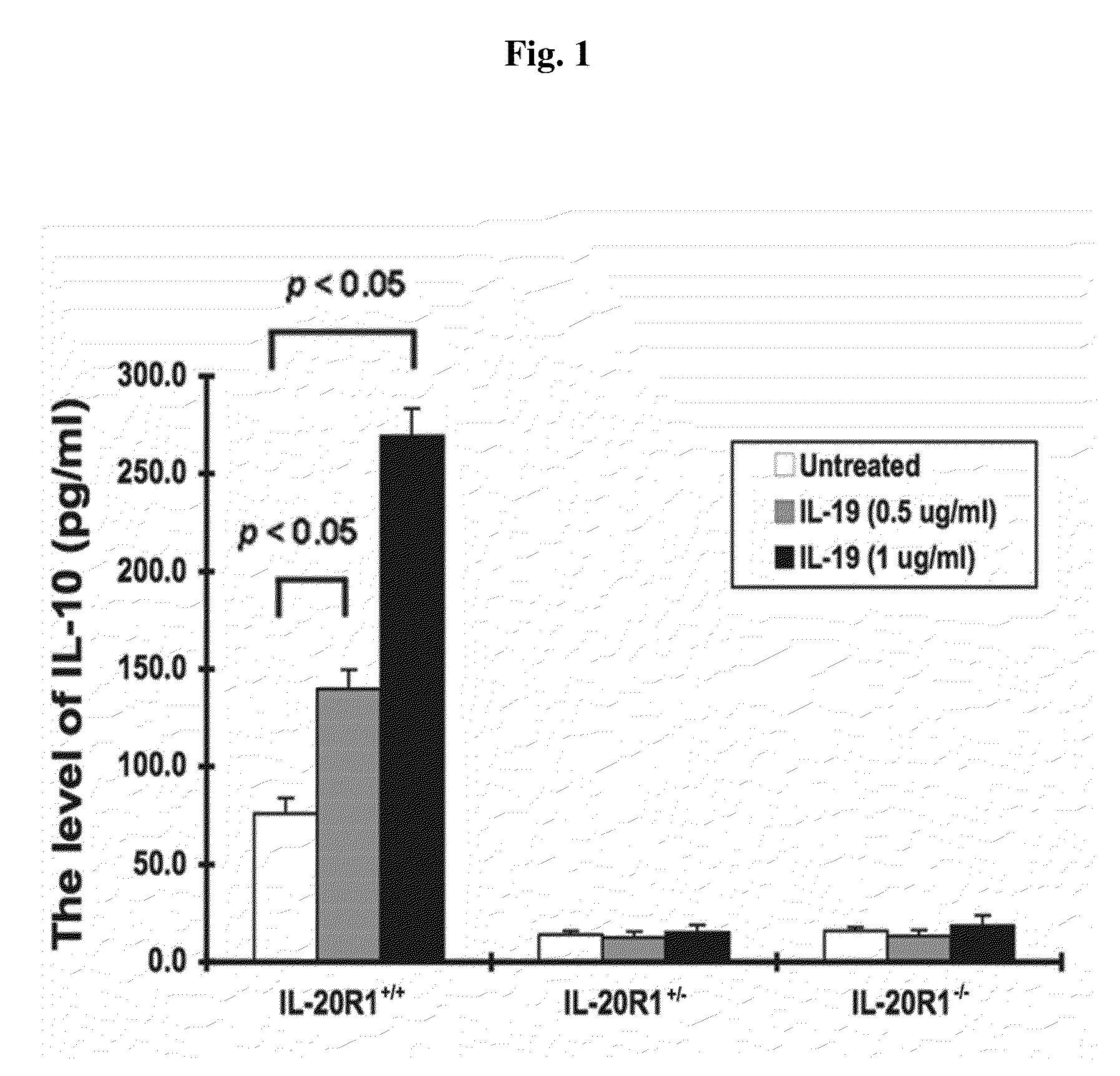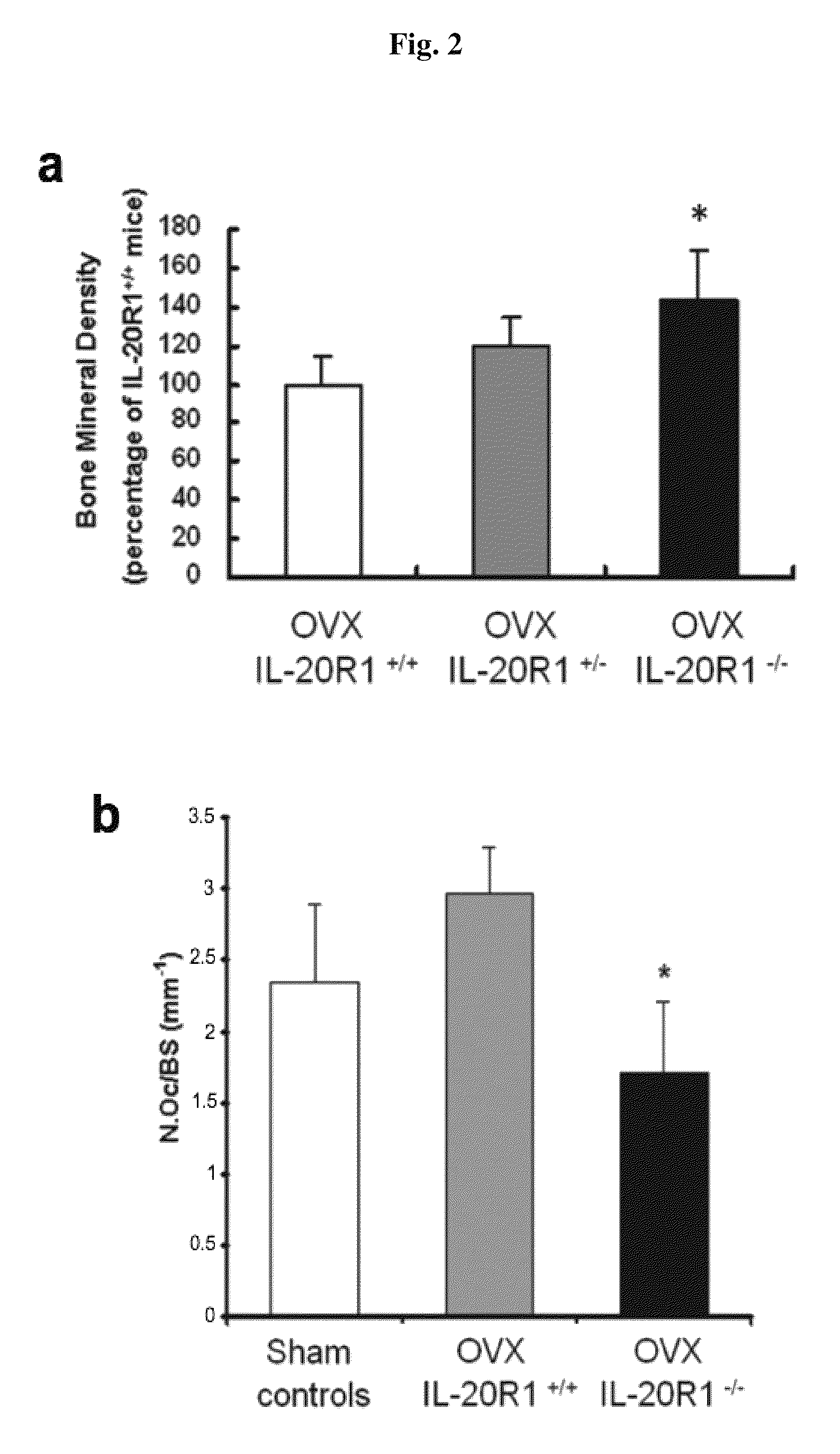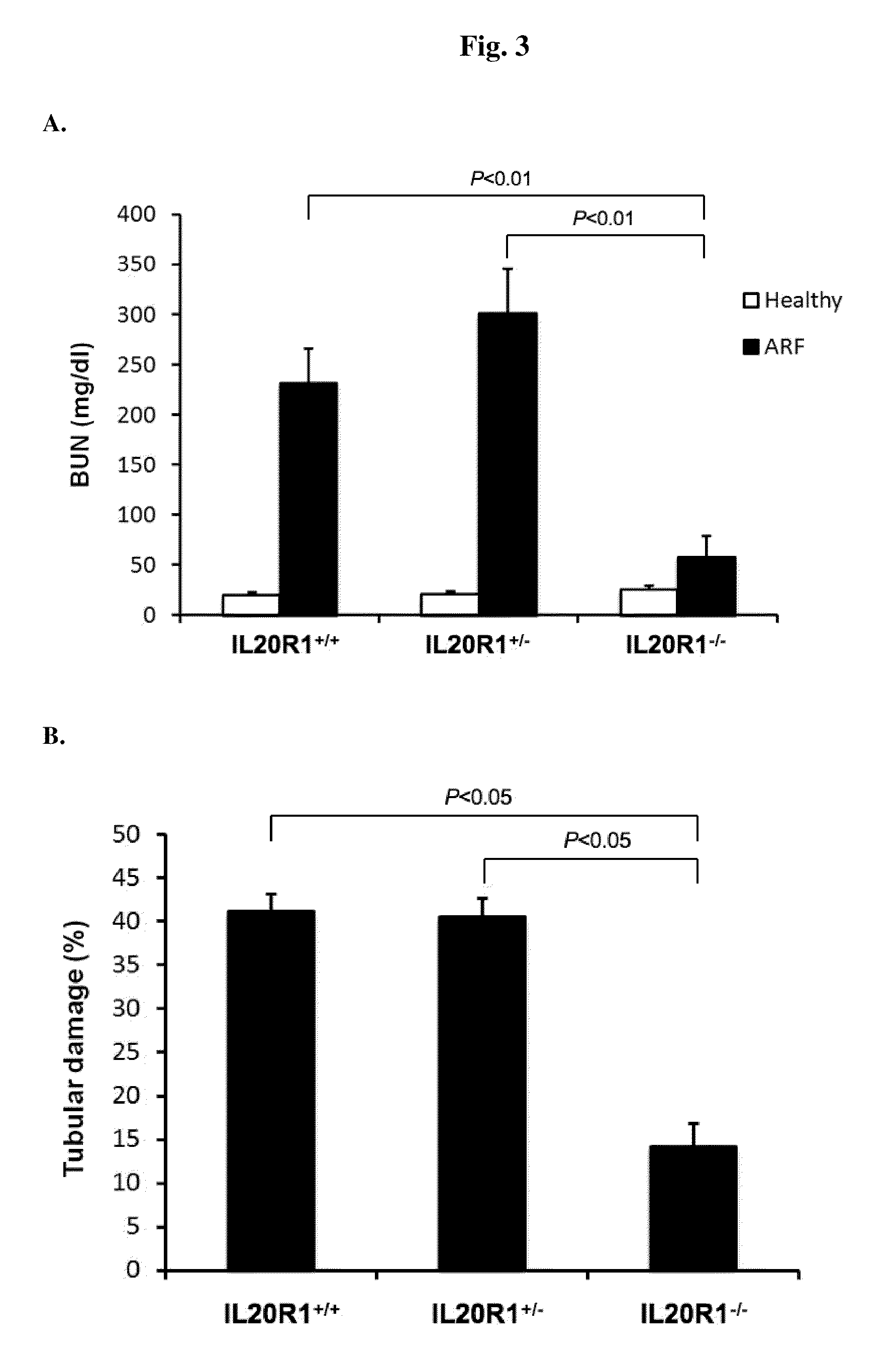Methods for treating osteoporosis with anti-IL-20 receptor antibodies
a technology of anti-il-20 receptor and osteoporosis, which is applied in the field of methods for treating osteoporosis with anti-il-20 receptor antibodies, can solve problems such as weak and fragile bones, and achieve the effects of less severe osteoporosis, renal failure, and diabetic nephropathy
- Summary
- Abstract
- Description
- Claims
- Application Information
AI Technical Summary
Benefits of technology
Problems solved by technology
Method used
Image
Examples
example 1
Reduced Osteoporotic Bone Loss in IL-20R1 Knockout Mice
[0063]To generate an IL-20R1 knockout mouse, the exon 2 in mouse IL-20R1 gene was deleted via the traditional homologous recombination technology. The deletion of exon 2 was confirmed by Southernblot using a DNA probe hybridizable to the 3′ end of exon 2.
[0064]Lung tissues from IL-20R1 wild-type (+ / +), heterozygote (+ / −), and knockout (− / −) mice were examined by co-immunoprecipitation analysis to determine their expression of IL-20 receptor. Briefly, lysates of the lung tissues were incubated with His-tagged IL-20 under suitable conditions that allow IL-20 / IL-20 receptor binding. The lysates were then incubated with an anti-His-tag antibody and the resultant pellets were analyzed by immunoblotting to detect presence / absence of IL-20, IL-20R1, IL-20R2, and IL-22R1, using antibodies specific to these proteins. No IL-20R1 protein was detected in the lung lysates from IL-20R1− / − mice, indicating that the IL-20R1− / − mice do not expre...
example 2
Reduced Severity of HgCl2-Induced Renal Failure in IL-20R1 Knockout Mice
[0068]The IL-20R1+ / +, IL-20R1+ / −, and IL-20R1− / − mice mentioned above were subjected to HgCl2 treatment to induce acute renal failure (ARF), following the method described in Li H H, et al., Genes Immun. 2008 July; 9 (5):395-404.
[0069]Typically, HgCl2-treated mice exhibited increased BUN levels and renal tubular damage, both being indicators of renal dysfunction. In this study, an increased BUN level was observed in the IL-20R1+ / + mice treated with HgCl2. Differently, the BUN level in the HgCl2-treated IL-20R1− / − mice was much lower than that in the IL-20R1+ / + mice. See FIG. 3, panel A (P2-treated IL-20R1− / − mice as compared to the IL-20R1+ / + mice. See FIG. 3, panel B. These results clearly indicate that the severity of HgCl2-induced renal failure is much lower in IL-20R1 knockout mice than in normal mice. Accordingly, suppression the IL-20 receptor activity would be effective in treating acute renal failure.
example 3
Reduced Severity of STZ-Induced Diabetic Nephropathy in IL-20R1 Knockout Mice
[0070]Diabetes was induced in the IL-20R1+ / +, IL-20R1+ / −, and IL-20R1− / − mice mentioned in Example 1 above by streptozotocin (STZ), following the method described in Rossini A A, et al., Proc Natl Acad Sci USA 74:2485-2489, 1977. Typically, STZ-treated mice display increased glucose levels, serum BUN levels, and enlarged glomeruli. Here, the STZ-treated IL-20R1− / − mice showed much lower blood glucose levels as compared to the STZ-treated IL-20R1+ / + mice. See FIG. 4, panel A (P− / − mice was significantly higher than that of the IL-20R1+ / + mice at day 27 post STZ treatment. See FIG. 4, panel B. The serum BUN levels in the STZ-treated IL-20R1− / − mice were lower than those in the STZ-treated IL-20R1+ / + mice, indicating an improved renal function. See FIG. 4, panel C.
[0071]Glomerular enlargement during diabetes is an indication of renal damage. Here, the average glomerular area was lower in the STZ-treated IL-20R...
PUM
| Property | Measurement | Unit |
|---|---|---|
| molecule weight | aaaaa | aaaaa |
| bone mass | aaaaa | aaaaa |
| Bone mineral density | aaaaa | aaaaa |
Abstract
Description
Claims
Application Information
 Login to View More
Login to View More - R&D
- Intellectual Property
- Life Sciences
- Materials
- Tech Scout
- Unparalleled Data Quality
- Higher Quality Content
- 60% Fewer Hallucinations
Browse by: Latest US Patents, China's latest patents, Technical Efficacy Thesaurus, Application Domain, Technology Topic, Popular Technical Reports.
© 2025 PatSnap. All rights reserved.Legal|Privacy policy|Modern Slavery Act Transparency Statement|Sitemap|About US| Contact US: help@patsnap.com



